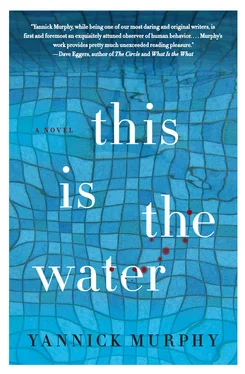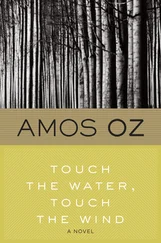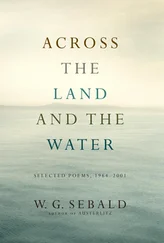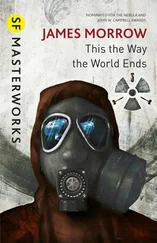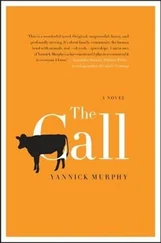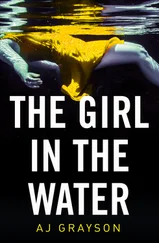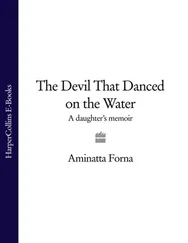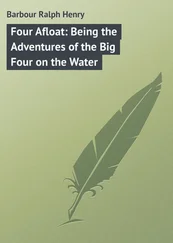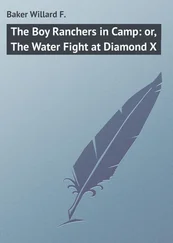What makes everything suddenly clear about your brother is Thomas reading to you that pain is addictive, that the same pathways that handle addiction handle chronic pain, so the body keeps wanting to feel the pain long after the trauma has occurred. Now, for example, you have been able to stop thinking about your brother by thinking about Paul instead. You’ve just transferred addictions instead of curing the first one. Until something else comes along and takes its place you’ll be doing it indefinitely, and now Thomas is talking about taking the girls to swim practice this afternoon because he will be headed up that way anyway. “No,” you blurt out, “I’ll take them,” thinking that if you don’t go you’ll miss seeing Paul, but then you remind yourself that Paul is an addiction, and that you shouldn’t want to see Paul. Probably the best thing for you and for everybody is that you not see Paul, and so you say, “Yes, that’s a good idea. You take them instead.”
You know later that day when you’re standing with Chris in her studio why you’re really there. It’s not to visit with Chris, or to see her latest artwork — paintings mostly of dark-colored flowers on dark canvasses that you know have already been bought by a wealthy collector/admirer in Connecticut even though they’re not yet completed — but to be standing in Paul’s house, touching the pen with the bank logo on it that he might have touched, and touching the door handle he touched and the window sash he might have opened on a hot, restless night after one of his nightmares woke him up. You should turn around and leave. You’re ashamed to realize why you’ve really come. You stand to leave. I will get up and go home. I’m ridiculous, you say to yourself, but you don’t go. You know Chris would be offended if you took off and left. Already she has put water on to boil for tea, and started talking again about how there still is no evidence against the killer. She shows you one of her latest paintings. You’re surprised. It’s not one of her usual dark ones of dark flowers painted on an even darker background. It’s a portrait of what she thinks the killer looks like. He has a forehead that hangs across his eyes like a ledge and wrinkles on his forehead so pronounced they look like rolls of flab. “I don’t get it. How do you know he looks like this?” you ask. Chris shrugs. She sips her tea and looks at her painting as if she were seeing it for the first time. “I don’t know,” she says. “I only feel that he looks like this, but it’s such a strong feeling I think maybe I should show it to the police. What do you think?” You shake your head. “Yeah, I guess you’re right,” she says. “They’d think I was crazy. But it’s the first time I’ve started painting anything in weeks. I was just so upset about Paul that I couldn’t. Now, though, I can’t stop painting this guy’s face.” She shows you multiple sketches she’s done of the killer’s face. She shows you his profile and she shows you him head on. Each time you wish you could turn away or push the sketches away, or better yet that she’d move the papers for you so you wouldn’t have to put your hands near him. “I think somehow me painting his face over and over again will help the guy get caught,” she says.
When the phone rings and Chris goes to answer it, you’re relieved. She takes the sketches with her to the kitchen, where the phone is, and you don’t have to look at them any longer. You wander around her house sipping your tea. You go into their bedroom. On the shelf is a picture of Paul and Chris on their wedding day in their wedding clothes holding hands and jumping off a dock and into a pond. Midflight, they are smiling, and the sun is shining so brightly the water looks white. You wish you had been at their wedding. You bet it was fun. You wonder which side of the bed Paul lies on. The right side looks just as rumpled as the left, the covers are peeled back on either side, and there’s a glass of water on a table on one side, but of course there is no way to tell if it is Chris’s, because you have never seen Chris wear lipstick, or any makeup for that matter. You wonder if you held the glass up and just saw the imprint of the lips on the glass if you could tell whose they were. Would you know by just having felt Paul’s lips on your own what the shape of them could actually look like? The picture of them on their wedding day has a silver frame. One side of the frame looks smudged with fingerprints, as if Chris had picked it up time and time again just to stare at it, remembering how they once were.
You look out the window. Is this the view Paul sees every day? It’s a windy day. The kind of day that makes you think that colder weather will come back for sure and that you shouldn’t be fooled by the bright sunshine, because the wind brings down some dried leaves off a nearby gardenia bush, making you think of maples losing their leaves in the autumn. There is a hedge of American Beauty and a small cherry tree that looks newly planted, with wood chips circling its base. There is a robin pecking at the ground. There is an old wooden playhouse that must have been Cleo’s when she was younger. The shutters by the playhouse’s window look as though they could fall off in the next breeze.
The tea has been served in mugs without handles that look like Japanese teacups. They are beautiful, like most of the things in Chris’s house. Even the plate surrounding the wall switch is a beautiful scene of a mountainside with a pink sunset painted on ceramic. You think of your own house. You have barely decorated it. You believe the knots in the wood form enough pictures on their own, and you don’t want to put up anything on the walls to detract from them. You haven’t even planted flowers outside of the house. The layering of the rocks on the rounded stone wall that garden snakes sometimes slither out from is artistry enough for you. How nice it must be for Paul to come home to this house, where the photographs are framed in silver frames, and where the windows have curtains.
You take another sip of the tea. Holding the mug without handles is comforting. It warms your hands. After Chris gets off the phone, she shows you articles and a website she found that talk about the past murder victims of the rest-stop killer who probably killed Kim.
“I’ve read through all this information, and I can’t find any link between them all,” Chris says. “Some were very young, and some were just young. What they all had in common was the slit in their necks when they arrived at the morgue, and of course the fact that they were killed outside of a rest stop. All of them were women alone. Some lived in the state, some lived in a neighboring state and were just passing through. I don’t think the cops had a thing to go on. There wasn’t the science back then to figure out the identity of the guy, but now we can look at the DNA. We can see who did it. Hell, we can even dig up a body and look at the old DNA and get an identity match. I think the police should be asked to dig up the bodies. I’ve even talked to the families about it.”
“You’ve what?”
“There’s one who’s all for it. It’s the daughter of one of the victims. Her name is Pam Chantal. Her mother was a nurse named Bobby Chantal. At the time of the murder, Pam was only five. Her father was a Vietnam vet, but he never married Bobby Chantal, and he disappeared not long after Pam was born. Now Pam wants to know who killed her mother, the only relative she ever knew. I told her I’d help her talk to the police and tell them they have permission to exhume the body and test it for DNA samples. She seems to need someone to go through it with her.”
“Chris, are you that obsessed by this case?” you say. “It sounds like quite a job to take on. Are you serious?”
Читать дальше
